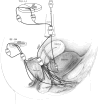Animal Models for the Study of Female Sexual Dysfunction
- PMID: 27784584
- PMCID: PMC5568851
- DOI: 10.1002/smrj.14
Animal Models for the Study of Female Sexual Dysfunction
Abstract
Introduction: Significant progress has been made in elucidating the physiological and pharmacological mechanisms of female sexual function through preclinical animal research. The continued development of animal models is vital for the understanding and treatment of the many diverse disorders that occur in women.
Aim: To provide an updated review of the experimental models evaluating female sexual function that may be useful for clinical translation.
Methods: Review of English written, peer-reviewed literature, primarily from 2000 to 2012, that described studies on female sexual behavior related to motivation, arousal, physiological monitoring of genital function and urogenital pain.
Main outcomes measures: Analysis of supporting evidence for the suitability of the animal model to provide measurable indices related to desire, arousal, reward, orgasm, and pelvic pain.
Results: The development of female animal models has provided important insights in the peripheral and central processes regulating sexual function. Behavioral models of sexual desire, motivation, and reward are well developed. Central arousal and orgasmic responses are less well understood, compared with the physiological changes associated with genital arousal. Models of nociception are useful for replicating symptoms and identifying the neurobiological pathways involved. While in some cases translation to women correlates with the findings in animals, the requirement of circulating hormones for sexual receptivity in rodents and the multifactorial nature of women's sexual function requires better designed studies and careful analysis. The current models have studied sexual dysfunction or pelvic pain in isolation; combining these aspects would help to elucidate interactions of the pathophysiology of pain and sexual dysfunction.
Conclusions: Basic research in animals has been vital for understanding the anatomy, neurobiology, and physiological mechanisms underlying sexual function and urogenital pain. These models are important for understanding the etiology of female sexual function and for future development of pharmacological treatments for sexual dysfunctions with or without pain. Marson L, Giamberardino MA, Costantini R, Czakanski P, and Wesselmann U. Animal models for the study of female sexual dysfunction. Sex Med Rev 2013;1:108-122.
Keywords: Arousal; Copulatory Behavior; Desire; Neural Pathways; Orgasm; Pain.
Copyright © 2013 International Society for Sexual Medicine. Published by Elsevier Inc. All rights reserved.
Conflict of interest statement
Figures


References
-
- Giraldi A, Marson L, Nappi R, Pfaus J, Traish AM, Vardi Y, Goldstein I. Physiology of female sexual function: Animal models. J Sex Med. 2004;1:237–53. Epub 2006/01/21. eng. - PubMed
-
- Giuliano F, Pfaus J, Srilatha B, Hedlund P, Hisasue S, Marson L, Wallen K. Experimental models for the study of female and male sexual function. J Sex Med. 2010;7:2970–95. Epub 2010/11/06.eng. - PubMed
-
- Basson R, Leiblum S, Brotto L, Derogatis L, Fourcroy J, Fugl-Meyer K, Graziottin A, Heiman JR, Laan E, Meston C, Schover L, van Lankveld J, Shultz WW. Revised definitions of women’s sexual dysfunction. J Sex Med. 2004;1:40–8. Epub 2006/01/21. eng. - PubMed
-
- Bachmann GA, Rosen R, Pinn VW, Utian WH, Ayers C, Basson R, Binik YM, Brown C, Foster DC, Gibbons JM, Jr, Goldstein I, Grazziottin A, Haefner HK, Harlow BL, Spaot SR, Leiblum SR, Masheb RM, Reed BD, Sobel JD, Veasly C, Wesselmann U, Witkin SS. Vulvodynia: A state-of-the-art consensus on definitions, diagnosis and management. J Reprod Med. 2006;51:447–56. - PubMed
-
- Basson R, Althof S, Davis S, Fugl-Meyer K, Goldstein I, Leiblum S, Meston C, Rosen R, Wagner G. Summary of the recommendations on sexual dysfunctions in women. J Sex Med. 2004;1:24–34. - PubMed
Publication types
Grants and funding
LinkOut - more resources
Full Text Sources
Other Literature Sources
